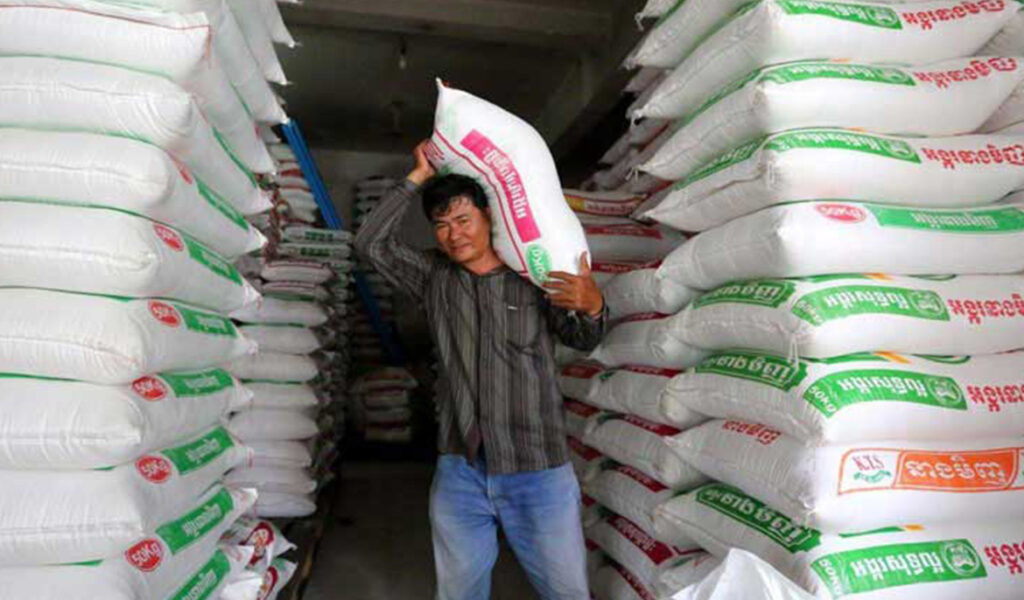Expanding market, increasing production capacity and high quality standards will help Cambodia to achieve its one million tonne milled rice export target by 2025, said Cambodia Rice Federation President Chan Sokheang.
With the export strategy focused on market expansion, raising production and storage capacity and elevating rice quality standards, the ambitious target of a million-tonne export is attainable, Sokheang said.
“We are firmly optimistic about achieving this target,” Sokheang told Khmer Times.
“Our strategic approach addresses key areas that will propel Cambodia’s rice industry to new heights,” he said.
CRF has set three stages of milled rice exports for 2023, 2024, and 2025 at 700,000 tonnes, 850,000 tonnes and a million tonnes respectively.
The target set in 2023 showed a significant leap with total milled rice exports reaching 650,000 tonnes, just below the target of 700,000 tonnes.
In the first five months this year, Cambodia exported 302,592 tonnes of milled rice to foreign markets, coming to 35 percent of the target, putting the country on track to achieve its 2024 target.
This momentum is fuelled by several factors, he said.
New markets are emerging as key drivers. A recent agreement with Indonesia opened the door for substantial rice exports with potential annual shipments reaching 250,000 tonnes. Other countries like the US have also shown interest, further diversifying Cambodia’s export base.
Last week, US-based Otis McAllister, one of the widely known companies in the trade of food products, showed its interest in buying milled rice from Cambodia for the US market.
In all, 16 major rice export companies, which are members of CRF, are currently working directly with Otis McAllister Company to reach an agreement to export Cambodian rice to the US soon.
“These new markets present a new opportunity for Cambodian rice,” said Song Saran, CEO of Amru Rice (Cambodia), a leading rice exporting firm.
“The focus on high-quality fragrant rice varieties positions Cambodia competitively in the global market,” Saran said.
While the outlook is optimistic, the CRF acknowledges potential hurdles such as a lack of financial support as working capital for collecting paddy rice.
“We see local millers are well below their milling capacity due to lack of working capital in collecting paddy rice for storage and milling,” Sokheang said. “We are working with banks and CGCC to disburse more loans as working capital for collecting paddy rice for storage in the harvest season.”
Other challenges are logistics and transport and CRF has approached ports and railway firms for reducing transport fares of milled rice.
According to the Ministry of Agriculture, Cambodia has a total of 3.54 million hectares of rice fields, producing a yearly yield of 12.49 million tonnes of paddy rice.
Cambodia has a paddy surplus of 6.5 million tonnes, meaning Cambodia is capable of exporting more rice, said Khim Finan, under-secretary of state of the Ministry of Agriculture, Forestry, and Fisheries, at an event in May.
“We believe that we play a role not just in fulfilling our own food security, but we can also play a key role in a regional level food safety,” he said.
With a combination of favourable market conditions, a focus on quality, and a commitment to sustainability, Cambodia is well-positioned to achieve its ambitious rice export goals, the CRF President said.



